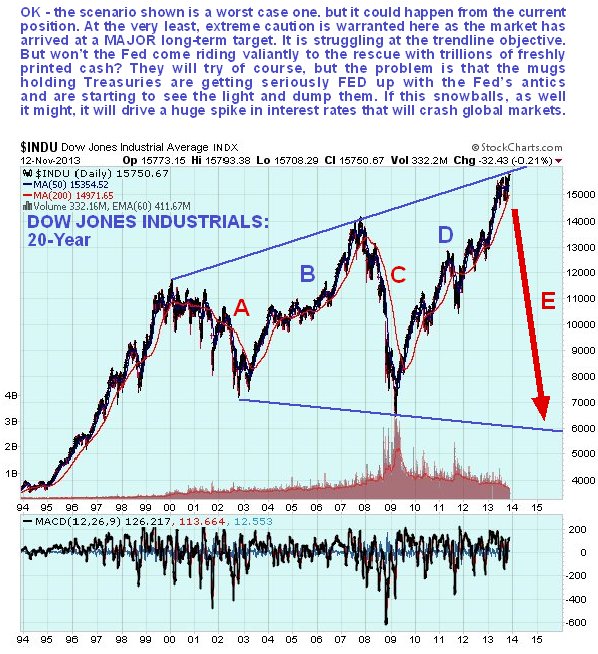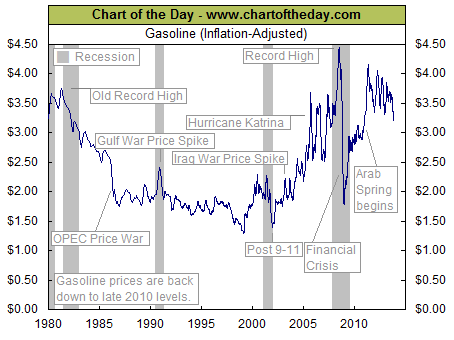 No longer wonder “why bitcoin has value?”. Bitcoin has traded in a range of 144.20 to a new high last night of 429.89. It sits at 428 this morning.
No longer wonder “why bitcoin has value?”. Bitcoin has traded in a range of 144.20 to a new high last night of 429.89. It sits at 428 this morning.
I Finally Figured Out Bitcoin
Economists,
Lieutenants,
Agents in the Field,
lend me your ears!
For I have finally figured out bitcoin! And truthfully, this is one of my best mental achievements. And hopefully, through my ability to write clearly and explain things, I may be able to explain bitcoin to us all.
I had listened to this podcast of Stefan Molyneux on bitcoin. It was very good, but did not fully answer my question, “why does a bitcoin have any value?” However, what the podcast did do is bring my perception or “observation” up high enough that I could finally see and conclude how bitcoin does actually have value.
To understand why bitcoin has value, you first need to think about why currencies exist in the first place.
The answer from an economics 202 class is “to avoid barter.”
Barter is horribly inefficient. If you are a cow herder and want a pint of ale, well, you’re out of luck. Because you can’t trade a whole cow for a measly pint of ale. Nor can you slice off pieces of beef from the live cow to make the trade more fair. Therefore, if any kind of economic trade and progress is to be made, you need a currency.
Historically, this has meant anything from gold and silver to salt and sea shells. But regardless of what item inevitably becomes an local economy’s currency, they all have some key traits and qualities in common.
Divisibility – You can divide gold, silver or salt into measurable quantities. Pounds, ounces, grams, etc. This allows you to scale the currency to the value of the item you wish to purchase.
Durability – The currency cannot rot or decay over time. Milk is a bad currency because in 3 years time it will be quite gross. Gold in 3 years time will still be gold.
Store of Value – The currency must also maintain its value and purchasing power over time. If you’re like Venezuela and constantly printing off more commie paper money, it will lose its value. But with a limited supply (gold, silver, diamonds, etc.) you can assume that currency will still have roughly the same amount of purchasing power as it did.
Finally,
Intrinsic Value – The currency must have some kind of real value. Gold can be used for jewelry. Silver can be used in electronics. Copper can be used in plumbing. Salt can be used in cooking. In other words, people will take it as a currency, because even if they don’t use it themselves, they know somebody who will. It does have an intrinsic value unto itself.
And it is here (intrinsic value) where most people get lost on bitcoin.
Bitcoin meets all the OTHER characteristics and traits of a good currency. It’s divisible. It’s durable (infinitely as it is digital). And it will not decay (again, binary doesn’t decay).
But precisely what practical, real world application does it have? You can’t use it in electronics. You can’t make jewelry (aka – buying sex) with it. So why does it have any intrinsic value at all?
The answer lies in comparing a currency’s “intrinsic value” versus its value as a currency.
For example look at what has served as the primary currency throughout most of human history – gold.
Why does gold have intrinsic value?
Economists will answer, “because you can use it in jewelry” which is the polite person’s way of saying, “men can buy sex with it.”
But does that make any sense? That ONE thing you can do with gold, “make jewelry” is why it served as the standard currency for thousands of years across the planet? What you’ll soon realize is that, yes, while gold can be used to make jewelry it serves a much more important function to society as a currency. In other words, an item’s value as a currency is really not dependent on its intrinsic value. It just needs SOME intrinsic value to get people to have faith in it and start trading it.
Salt can be used to flavor and store food. Was that grounds enough to make it the Mali Empire’s default currency?
Silver can be used to make jewelry and some industrial items. Was that grounds enough to make it the currency of the wild west?
Large clam shells could make some funky and uncomfortable bras in ancient Polynesia. Was that grounds enough to make it the default currency in the south Pacific?
Apparently so, because it DID HAPPEN. But not because of jewelry making potential or food storage potential. That was just “enough” intrinsic value to suffice. It was because those items provided more value to the economy as a currency than it did some as jewelry making materials or food flavoring. And to prove it an interesting comparison would be to compare the amount of gold (or silver) actually being used as jewelry versus that of currency, bullion or investment. I’d surmise over time, 90% of silver and gold has been used as a currency and NOT tiaras.
Understanding that a currency derives most of its value from its NON-intrinsic value traits, and only needs a “little” intrinsic value, this then puts the focus on how bitcoin derives it’s “little” but necessary intrinsic value.
The answer is simple – scarcity.
Consider diamonds.
Why do they have value?
Taking the jewelry and industrial drilling uses of it away, why do they have value?
The answer is, they don’t. They serve no purpose. At least from a PRACTICAL or PURPOSEFUL perspective.
But because they are so rare people will scramble for them. But understand what we’re talking about when we talk about “scarcity” or “rarity.” It is in relation to other things.
On this planet there is 9 quadrillion megatons of dirt and maybe 100,000 pounds of diamonds. Both dirt and diamonds have no real practical use or value, but diamonds are considered infinitely more valuable. Ergo, when we talk about scarcity, is merely a RATIO between two items that determine whether it is valuable or not. It is simply the ratio of the supply of one thing on the planet (copper) versus that of another (platinum).
And this is why bitcoin has that wee bit of necessary intrinsic value. It is very much like diamonds in that is has no practical use, but it is scarce. Matter of fact, diamonds, gold, silver, rare earth, etc., are constantly being dug up out of the ground. The makers of bitcoin have limited their supply to 21 million units forever, making it even more scarce.
In the end, bitcoin is really nothing more than a private sector currency akin to digital diamonds. And it is my opinion, you have a currency that is better than any official government fiat currency out there as it cannot be hyper-inflated away by a central bank. However, there are some drawbacks to bitcoin.
One, it is completely dependent upon the internet working. Any post apocalyptic event that shuts it down or turns off the electricity, and it’s about as valuable as those gold ETF’s you have. Two, it is not yet universally accepted by people. This may change over time, but it is a distinct (though growing) minority who use bitcoin. Three, it is such a threat to other established currencies I have no doubt in my mind governments will do everything they can to put the kibosh on it. Fourth, it can be undermined by another digital and more preferable currency.
Regardless, whether bitcoin ends up becoming a universally accepted currency is another matter. the key economic lesson to take from this is what drives the value of a currency is not so much its intrinsic value as much as it is the amount of value society puts on it as a tool for exchange.
(if you liked this post and it finally explained that NAGGING question, “how does Bitcoin have any value” please consider buying some of my books- Worthless, Enjoy the Decline, How to Privatize Governments, and Boris the Shitting Buffalo)
 Gold has long been a sought after commodity. Human history, such as the conquest of the Americas, has been defined by the quest to find gold mines and reserves. Now, however, the world’s gold mines may be becoming fully tapped. Some experts even believe that all gold mines could become fully tapped within the next 20 years. This could have a dramatic impact on gold and bullion prices as while supply may run out, demand most likely will not.
Gold has long been a sought after commodity. Human history, such as the conquest of the Americas, has been defined by the quest to find gold mines and reserves. Now, however, the world’s gold mines may be becoming fully tapped. Some experts even believe that all gold mines could become fully tapped within the next 20 years. This could have a dramatic impact on gold and bullion prices as while supply may run out, demand most likely will not.

 In just outlandish political apeals, NDP leader Thomas Mulcair argues for higher consumer costs, lower wage growth, and less employment. seemingly the complete opposite of what they usually stand for.
In just outlandish political apeals, NDP leader Thomas Mulcair argues for higher consumer costs, lower wage growth, and less employment. seemingly the complete opposite of what they usually stand for.


 No longer wonder “
No longer wonder “










